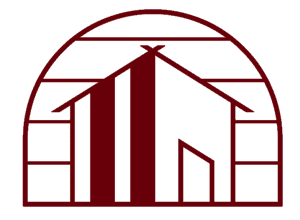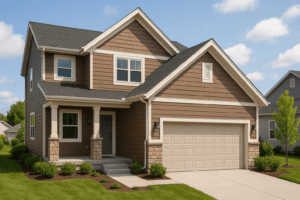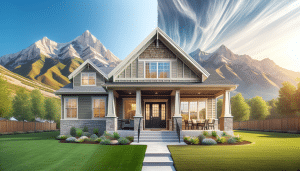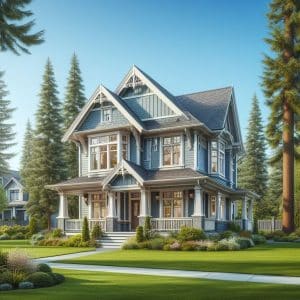Choosing the right siding material for your home is a crucial decision that can affect your property’s aesthetic appeal, durability, and even energy efficiency. Fortunately, you’ve landed in the perfect spot. Utah Siding & Exteriors is here to guide homeowners through the maze of options available. We’ll discuss the pros and cons of various siding materials, helping you make an informed choice that best suits your needs and lifestyle.
Understanding Siding Materials: A Brief Overview
Siding is more than just the outer skin of your home; it’s a critical component that protects your dwelling from the elements while enhancing its curb appeal. The market offers a plethora of options, each with its unique benefits and limitations. Our expertise lies in guiding homeowners in our service areas through these choices, ensuring their home not only looks fantastic but stands the test of time against the unique challenges of our region’s climate.
From traditional Wood Siding to modern vinyl options, understanding the nature of each material is the first step towards making a decision. Factors such as durability, maintenance level, aesthetic appeal, and cost are critical considerations. Let’s delve into some of these popular options to see how they stack up.
The Enduring Charm of Wood Siding
Wood siding is synonymous with classic beauty. Its natural look can give your home a warm, inviting appearance that many homeowners desire. Whether you’re leaning towards cedar, pine, or redwood, wood siding offers versatility in terms of finishes and styles. However, it’s not all about looks; wood siding is highly customizable and can be painted or stained to match your personal style.
But, here’s the catch. Wood siding requires regular maintenance to protect it from moisture, insects, and rot. Periodic painting or staining is necessary to maintain its charm and longevity. Moreover, it tends to be on the pricier side compared to some other materials. So, if you’re willing to put in the time and investment, wood siding can grace your home with unmatched beauty and character.
The Low-Maintenance Wonder of Vinyl Siding
Vinyl siding is a popular choice for homeowners seeking a balance between aesthetics and ease of maintenance. It comes in an impressive array of colors and styles, making it easy to find a look that complements your home’s architecture. Moreover, its durability and resistance to fading and weathering make it an appealing choice for many.
One of the greatest advantages of vinyl siding is its low maintenance. It doesn’t require painting or staining—just an occasional cleaning with soap and water is enough to keep it looking new. On the downside, vinyl can sometimes look less natural than wood, and if not properly installed, it can be prone to damage from extreme weather. Still, for many homeowners, the benefits far outweigh these concerns.
Fiber Cement: The Best of Both Worlds?
Fiber Cement Siding, a composite material made of cement, sand, and cellulose fibers, offers the look of wood without the high maintenance. It’s known for its durability, resistance to termites and rot, and fire-retardant properties. This makes it a strong contender for homeowners wanting the aesthetic of wood with fewer headaches.
On the flipside, fiber cement siding is heavier and requires more labor for installation, which can drive up costs. It also requires some maintenance, like repainting every 15 to 20 years, to keep its appearance fresh. Yet, for those who value longevity and a wood-like appearance without the constant upkeep, fiber cement siding is a compelling option.
Metal Siding: Sleek and Modern
Metal siding, typically made from aluminum or steel, offers a modern look with a slew of practical benefits. It’s incredibly durable, fire-resistant, and can withstand harsh weather conditions without warping or rotting. Aluminum, being lighter, is easier to install and doesn’t rust, making it suitable for coastal homes.
However, metal siding can be prone to denting and can be noisier during rain or hailstorms. It also may require painting to maintain its appearance over time, though less frequently than wood. Despite these considerations, its longevity and minimal maintenance make metal siding a strong candidate for the contemporary homeowner.
Stucco Siding: A Touch of Timeless Elegance
Stucco has been used as a siding material for centuries, prized for its distinctive, textured appearance that lends a touch of elegance to any home. It’s particularly well-suited for homes in drier climates, thanks to its excellent resistance to heat and sunlight.
While stucco is durable and offers great aesthetic appeal, it is not without its drawbacks. It can be expensive to install, particularly if applying over an existing siding material. Additionally, stucco requires skilled artisans for installation, which can add to the cost. Despite these aspects, its durability and classic look make it a favored choice for homeowners seeking a side of timeless elegance with their siding.
Comparing Siding Materials: Key Considerations
- Durability: Some materials like fiber cement and metal boast high durability, resisting various weather conditions and pests. These options are great for homeowners looking for longevity.
- Maintenance: If low upkeep is vital, vinyl and metal siding demand less maintenance compared to wood or stucco, which require periodic painting or staining.
- Aesthetic Appeal: Wood and stucco offer unique beauty and texture that can elevate a home’s appearance, but modern advancements in vinyl and fiber cement also provide attractive alternatives.
- Cost: Initial installation costs can vary widely, with options like vinyl and metal siding generally being more cost-effective than wood or stucco.
- Energy Efficiency: Certain materials, especially those that feature insulated options, can enhance a home’s energy efficiency, potentially reducing heating and cooling costs.
Embracing Eco-Friendly Siding Options
In today’s environmentally conscious world, many homeowners are looking for sustainable siding options. Materials like fiber cement and metal siding are not only durable but also boast recyclable properties, making them greener choices. Additionally, wood siding, when sourced from sustainably managed forests, can be an eco-friendly option.
Moreover, innovations in siding materials now include energy-efficient options that help reduce a home’s carbon footprint. Choosing eco-friendly siding doesn’t mean compromising on style or durability; it’s about making a responsible choice for the environment while still achieving the desired aesthetic for your home.
Enhancing Your Home’s Value with the Right Siding
Selecting the right siding material can significantly boost your home’s curb appeal and, consequently, its market value. Materials like fiber cement and high-quality vinyl siding are particularly valued for their longevity, aesthetic appeal, and low maintenance, making them smart investments.
Furthermore, considering the climate and environmental factors of your area is essential in choosing siding that will withstand the test of time. Utah Siding & Exteriors can help you navigate these choices, ensuring that your selection not only enhances your home’s beauty but also contributes to its lasting value.
Conclusion: Making the Perfect Choice for Your Home
At Utah Siding & Exteriors, we understand the importance of choosing the right siding material for your home. It’s about balancing aesthetics, functionality, and budget to find a solution that meets your needs and exceeds your expectations. With our expertise and a wide range of options, we’re here to guide you through every step of the process.
Whether you’re ready to dive in or still have questions, don’t hesitate to reach out. Call us today at 801-509-9241 or Request a Free Quote. Let’s work together to make your home spectacular.




